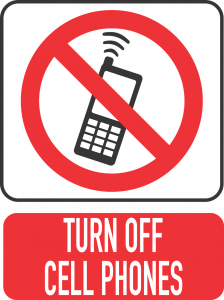EMF Radiation: 4 Critical Dangers and Health Risks – What You Need to Know
EMF Radiation: 4 Critical Dangers and Health Risks – What You Need to Know
Overview
EMF Radiation-Our beautiful living world is full of energy fields that are being produced by almost everything around us: the sun that makes life possible on earth, the earth itself, light sources that give us the power of vision, communication devices that allow us to connect with people around the world, household appliances that make our life productive, and the electricity that powers these appliances are all constantly sending out waves of energy, creating what is called electromagnetic fields (EMFs).
While these energy fields were previously known to be harmless, there has been a growing concern among scientists, as well as health-conscious individuals, about the possible health risks associated with electromagnetic fields radiation. Let’s dive deeper.
What is EMF Radiation?
Anything that uses electricity – power lines, home appliances, mobile phones, computers – sends out a stream of invisible energy waves, which creates an energy field around them. These energy fields can be of two types: electric and magnetic fields. Electric fields are created by voltage difference and are therefore present even when the device is turned off, whereas magnetic fields are produced only when the current is flowing through them. While buildings and objects can easily obstruct or weaken electric fields, magnetic fields cannot be blocked by any living or nonliving thing – they can only be redirected. Together electric and magnetic fields are referred to as electromagnetic fields and the energy waves that create them are called EMF radiation.
EMF radiation: types and sources
Sources of electromagnetic fields radiation can be both natural and human-made. Natural radiations include visible light from the sun, UV rays, cosmic waves, gamma rays, and thunderstorms.
Power lines, radio waves, microwaves, mobile phones, communication technologies, electrical appliances, lasers, light bulbs, and medical X-rays are some examples of human-made electromagnetic fields radiation sources.
electromagnetic fields waves can be of wide-ranging frequencies. Based on their frequency, they are represented on a scale called the electromagnetic spectrum – ranging from the lowest possible frequency (or longest wavelength) to the highest possible frequency (shortest wavelength). The visible light range represents only an extremely tiny portion of this spectrum. Electromagnetic fields radiations are largely invisible to the human eye.
3 Natural Ways To Protect Yourself: EMF Radiation, Inflammation, and Cancer
Levels of EMF exposure and dangers
Based on their ability to interact with cells, there are two main categories of electromagnetic fields radiation: ionizing and non-ionizing.
Ionizing EMF radiation: sources and dangers
High-frequency EMF radiation
High energy (high frequency) radiations are ionizing in nature, meaning they can break chemical bonds and change the structure of cells. Examples of high-energy radiation include medical X-rays (they produce low doses), higher-energy UV rays, gamma radiation from radioactive material, and therapeutic radiation. Scientists agree that long-term exposure to this type of radiation can cause oxidative damage, cell mutations, fertility complications, or cancer. High doses of exposure over a short period can also cause tissue damage, burns, or hair loss.
Non-ionizing EMF radiation: sources and dangers
Non-ionizing radiations have lower frequency and energy that cannot break chemical bonds. They simply pass through cells or make them vibrate without harming them. However, the level of prolonged exposure determines potential harmful damages. Visible light spectrum, microwaves, radio waves, infrared, and electromagnetic fields produced by power lines and home appliances are examples of non-ionizing radiation.
They are broadly divided into three categories.
3 Natural Ways To Protect Yourself: EMF Radiation, Inflammation, and Cancer
Low-mid frequency EMF radiation
Its sources include the sun, artificial light bulbs, microwaves, infrared light, Wi-Fi routers, and remote controls. UV rays of lower energy (UVA) emitted by the sun also belong to this category.
While short-term exposure to radiation levels that are typically present in the environment is not thought to be detrimental to human health, higher doses, or low doses for long periods of time, may damage cells. For example, long-term exposure to UVA rays from the sun is well-known to cause skin tanning, pigmentation, dark spots, and rapid aging of skin cells. On the other hand, 5-15 minutes of sun exposure 2-3 times a week is recommended by the World Health Organization (WHO), as it provides vitamin D and supports mental health.
Microwave ovens used in home kitchens are designed with shielding materials that reduce the outside leakage of electromagnetic fields to barely detectable levels – which makes them relatively safe when used with care according to manufacturers. However, unless you are measure the radiation levels there’s no guarantee that the levels are safe. Non-ionizing radiation in this frequency range may create heat, which can damage tissues in case of intense and direct exposure – as in the case of burns caused by microwave ovens or infrared saunas. In my household, we do not use microwave ovens at all. Instead, we use steam ovens.
Extremely low-frequency EMF radiation
Power lines, electrical wirings, computers, home appliances like washing machines, refrigerators, air conditioners, electric shavers, electric blankets, and personal care devices emit this type of radiation. Whether long-term exposure to this type of electromagnetic fields poses a health risk is a hotly debated topic.
WHO experts feel that extra low-frequency level radiations that are usually present in homes and workplaces do not pose any serious health risk since most of these appliances are used for a very short duration of time. Moreover, electromagnetic fields weaken dramatically as we move farther from the device.
Moving just one foot away from your device may lower the EMF radiation levels by over 100 times. For example, EMF radiations from power lines are the strongest right beneath them, but they are effectively minimized by house walls. So unless you are living extremely close to power lines, it takes prolonged exposure to cause adverse health effects. Nevertheless, minimizing exposure should be of great importance and concern.
Some scientists argue that though non-ionizing radiation in homes and workplaces may not damage cells directly, it may increase the risk of cancer by other mechanisms. According to a 2012 study, exposure to extremely low-frequency EMF radiation may affect the pineal gland, which suppresses the production of melatonin hormones.
Melatonin helps fight oxidative damage and inhibits the development of tumors. Researchers suggest that by suppressing this beneficial hormone, EMFs may affect long-term health. However, the same study also found that chronic exposure may not cause long-lasting damage, as the levels of melatonin returned to normal after 3 days of exposure.
According to WHO data, electromagnetic fields produced by home appliances, though differing vastly in strength, are still far below guidelines. Numerous studies examining the health risk of power lines, electrical wirings, and household appliances have not found a direct link between EMF radiation exposure and cancer.
3 Natural Ways To Protect Yourself: EMF Radiation, Inflammation, and Cancer
Radiofrequency EMF Radiation

In 2002, a working group set up by the International Agency for Research on Cancer (IARC) – an agency that operates under the WHO – classified radiofrequency EMFs as a possible human carcinogen.
There have been some concerns about a possible link between cell phone use and brain tumors. One 2010 study that used internationally pooled data from 13 participating countries found no increased risk of glioma with cell phone use of more than 10 years. However, there is limited evidence to suggest that long-term heavy use may increase the risk of brain cancer. Overall, studies to date remain largely inconclusive.
One mice study suggested that heavy use of cell phones may cause a variety of neurological disorders, such as headaches, dizziness, poor memory, mental fog, and sleep disturbances. However, researchers pointed out that more studies are needed to confirm these effects on humans.
3 Natural Ways To Protect Yourself: EMF Radiation, Inflammation, and Cancer
Final thoughts
Different types of EMF radiation pose different risks to human health. While high-energy ionizing radiation has been known to cause serious damage, exposure to extremely low-frequency EMFs produced by household appliances and wireless devices is unlikely to cause adverse health effects. A possible link between heavy exposure to radiofrequency EMF radiation produced by cell phones has been suggested, but studies so far remain inconclusive.
Nonetheless, you can limit your EMF radiation exposure by taking occasional breaks from mobile phones, using air tube headphones for calls (which produce lower EMFs than cell phones), and keeping a distance from appliances when not using them. There are also EMF radiation shields for cell phones that can help minimize its harmful effects on the body. Remember, all cell phone brands provide a warning to not keep your cell phone close to your body. We will do well to heed this warning for the sake of our optimal health.
To Your Health!
References
https://www.ncbi.nlm.nih.gov/pmc/articles/PMC3334267/
https://publications.iarc.fr/98
https://pubmed.ncbi.nlm.nih.gov/10356702/
https://www.who.int/news-room/questions-and-answers/item/radiation-electromagnetic-fields
https://www.nrc.gov/reading-rm/basic-ref/students/for-educators/06.pdf
https://www.cdc.gov/nceh/radiation/nonionizing_radiation.html




























1 Comment
[…] carrageenan is a well-known irritant that has been linked with several health problems, including colon cancer. Food-grade carrageenan, on the other hand, is considered safe by […]